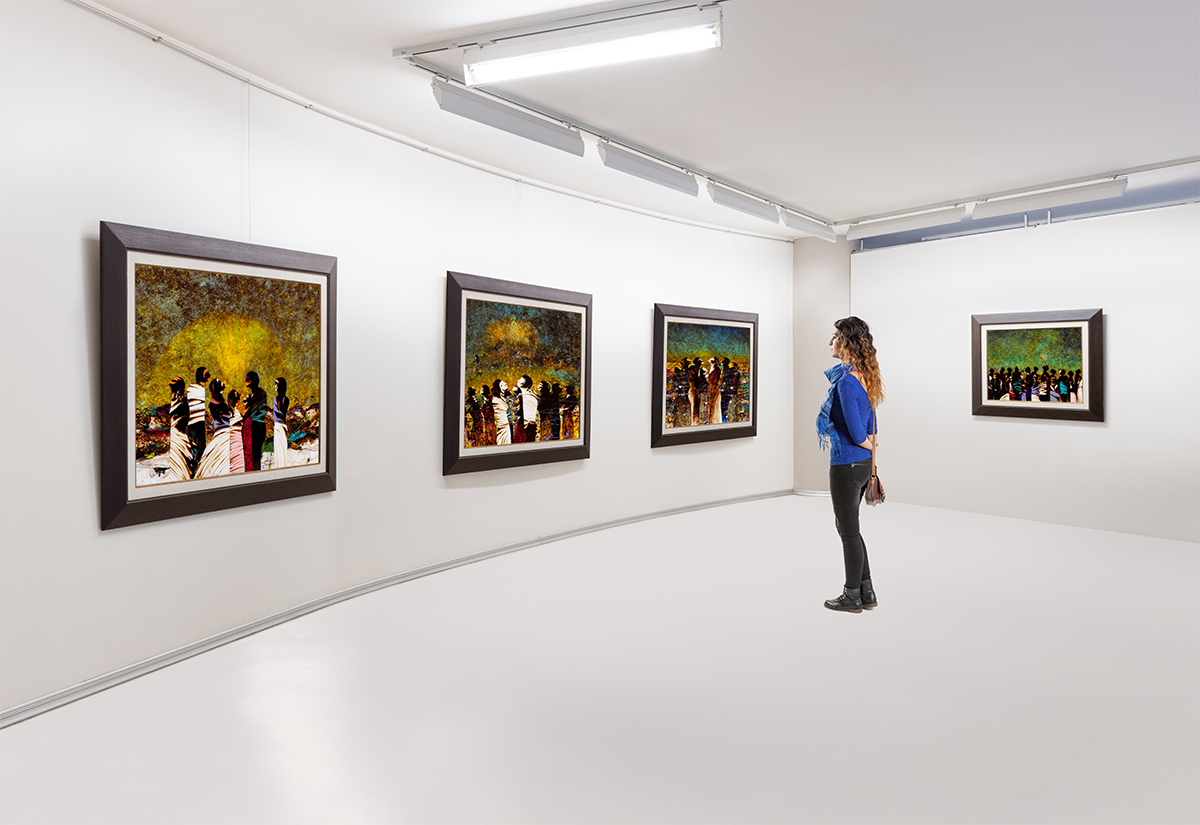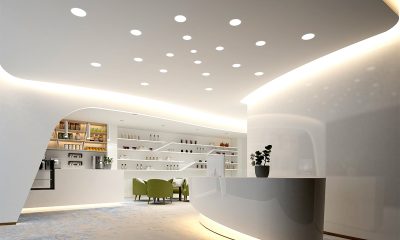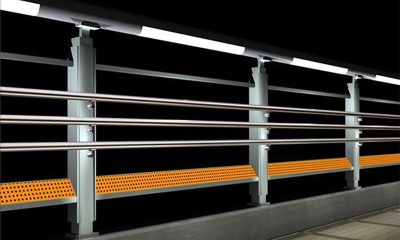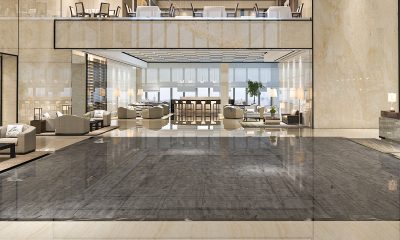Wall washers and grazers are used in the treatment of vertical surfaces, which impacts the psychological response to a space, overall perception of brightness, and visual comfort. Wall washing and wall grazing are the two most commonly used techniques to enhance vertical surfaces in architectural settings. The vertical surface treatment is intended to make a room appear more public and spacious, articulate texture, and increase illuminances.
LED wall washers create a soft, uniform glow to bathe a vertical surface in light. These luminaires produce an asymmetric, forward-throw light distribution across the entire wall. The smooth, graded wash of light eliminates shadows to hide imperfections and flatten the wall’s visual appearance. Wall washers are also used to highlight and accentuate the texture, color and shape of artworks and displays in museum and gallery applications. Wash washing may be achieved with several types of LED luminaires, including linear light fixtures, recessed downlights, track lights, wall and floor mount flood lights. Achieving a uniform layer of vertical surface illumination requires the LED luminaires to deliver high luminous and color qualities (light distribution, color uniformity across multiple luminaires, and color angular uniformity). Successful lighting of museum and retail displays with wall washing requires the use of high CRI light sources to reveal their color characteristics.
Wall grazing lights are used to emphasize the texture of a vertical surface. By grazing an entire wall, a perception of depth and visual interests can be generated. While wall washing requires the luminaires to be placed at a distance from the wall, wall grazing requires the luminaires to be placed close to the vertical surface. By striking the vertical surface at a glancing angle, the shadows can be heightened and textures can be revealed. Wall grazing is best served by linear LED luminaires.












Loading...